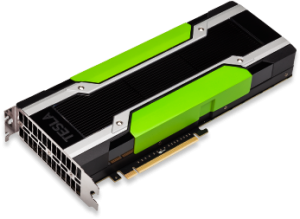
當前版本 : Gaussian 16 Rev. B.01
更新內容
- Static Raman intensities can be computed for excited states at the CIS and TD levels of theory. TD Freq=Raman computes the polarizability by numerical differentiation with respect to an electric field, so the cost of Freq=Raman for these methods is 7x that of the frequencies without Raman intensities.
- Dynamic allocation of tasks among Linda workers is now the default, improving parallel efficiency.
- The ChkChk utility now reports the job status (whether the job completed normally, failed, is in progress, etc.)
- The optional parameters in the input line for an atom can now specify the radius to use when finite (non-point) nuclei are used. The radius is specified as a floating point value in atomic units using the RadNuclear=val item. For example:
C(RadNucl=0.001) 0.0 0.0 3.0 - adds many additional quantities have been added to the matrix element file, including atomic populations, one-electron and property operator matrices and the non-adiabatic coupling vector.
- introduces command-line options to specify input and/or data using a checkpoint or matrix element file (the equivalent of the %OldChk or %OldMatrix Link 0 commands for input). See the Equivalencies tab for details.
- DFTB parameters are now read in Link 301 before the basis set is constructed, so that the presence or absence of d functions for an element can be taken from the parameter file.
- There are now command-line options to specify input and/or data to/from checkpoint or matrix element files. See the Equivalencies tab or the command line options page for details.
一 . Gaussian 16 特色更新 :
New Modeling Capabilities
- TD-DFT analytic second derivatives for predicting vibrational frequencies/IR and Raman spectra and performing transition state optimizations and IRC calculations for excited states.
- EOMCC analytic gradients for performing geometry optimizations.
- Anharmonic vibrational analysis for VCD and ROA spectra: see Freq=Anharmonic.
- Vibronic spectra and intensities: see Freq=FCHT and related options.
- Resonance Raman spectra: see Freq=ReadFCHT.
- New DFT functionals: M08 family, MN15, MN15L.
- New double-hybrid methods: DSDPBEP86, PBE0DH and PBEQIDH.
- PM7 semi-empirical method.
- Adamo excited state charge transfer diagnostic: see Pop=DCT.
- The EOMCC solvation interaction models of Caricato: see SCRF=PTED.
- Generalized internal coordinates, a facility which allows arbitrary redundant internal coordinates to be defined and used for optimization constraints and other purposes. See Geom=GIC and GIC Info.
Performance Enhancements
- NVIDIA K40 and K80 GPUs are supported under Linux for Hartree-Fock and DFT calculations. See the Using GPUs tab for details.
- Parallel performance on larger numbers of processors has been improved. See the Parallel Performance tab for information about how to get optimal performance on multiple CPUs and clusters.
- Gaussian 16 uses an optimized memory algorithm to avoid I/O during CCSD iterations.
- There are several enhancements to the GEDIIS optimization algorithm.
- CASSCF improvements for active spaces ≥ (10,10) increase performance and make active spaces of up to 16 orbitals feasible (depending on the molecular system).
- Significant speedup of the core correlation energies for W1 compound model.
- Gaussian 16 incorporates algorithmic improvements for significant speedup of the diagonal, second-order self-energy approximation (D2) component of composite electron propagator (CEP) methods as described in [DiazTinoco16]. See EPT.
二 . 相較於Gaussian 09 :
Calculation Defaults
- Integral accuracy is 10-12 rather than 10-10 in Gaussian 09.
- The default DFT grid for general use is UltraFine rather than FineGrid in G09; the default grid for CPHF is SG1 rather than CoarseGrid. See the discussion of the Integral keyword for details.
- SCRF defaults to the symmetric form of IEFPCM [Lipparini10] (not present in Gaussian 09) rather than the non-symmetric version.
- Physical constants use the 2010 values rather than the 2006 values in Gaussian 09.
Default Memory Use
Gaussian 16 defaults memory usage to %Mem=100MW (800MB). Even larger values are appropriate for calculations on larger molecules and when using many processors; refer to the Parallel Jobs tab for details.
TD-DFT Frequencies
TDDFT frequency calculations compute second derivatives analytically by default, since these are much faster than the numerical derivatives (the only choice in Gaussian 09).
三 . GPU加速的運用
 在Linux的作業系統環境下Gaussian 16目前能夠使用Nvidia K40和K80的GPUs來進行運算。
在Linux的作業系統環境下Gaussian 16目前能夠使用Nvidia K40和K80的GPUs來進行運算。
較早期的GPU則未有足夠的運算能力及記憶體滿足執行Gaussian 16的運算 ,且Gaussian 16也尚未支援 Tesla-Pascal 系列的GPU。
四 . 平行版網路計算
Gaussian多機版產權配合TCP-LINDA 9軟體執行環境,G09可用於叢集分散式計算系統環境,採跨節點網路計算,拓展計量化學的可能性。